It was much easier for publishers to have limited ad-tech technologies, ad formats, and channels and devices to monitor. All they had to do is to optimize their websites for the desktops and monetize the traffic. Today, many people are using phones and tablets rather than desktops to connect to the Web. According to Statista, the number of smartphone users will surpass six billion in 2021.
This has led the publishers to ponder how to create a mobile-first strategy and better monetize the traffic. Since there are a plethora of technologies and strategies suggested by experts in the advertising industry, it’s difficult to decide where to begin and what strategy should be incorporated.
To help you with this, we have collated a list of tactics that you can use to effectively monetize your mobile website traffic. But before starting, let’s have a look at the latest mobile advertising trends* in 2020.
*We have referred PubMatic’s latest mobile index report to jot down the facts and statistics in the next section
Table of Contents
Mobile Advertising Trends for Publishers in 2020
- Mobile usage is growing amidst the outbreak of Coronavirus. On average, a user will spend 4 hours and 18 minutes a day browsing on their mobile phones; that is ~10% higher than the last year.
- Despite the spike in mobile traffic, ad spending fell by 15% due to the pandemic. However, the loss in ad spending on mobile is much lower than the desktop ad spending (as there is a decline of 25%).
- The mobile share of monetized ad impressions has reached 51% by the end of Q1, 2020 to 48% at the beginning of March 2020. That shows the shift in share to mobile from the desktop is happening at a quicker rate than expected.
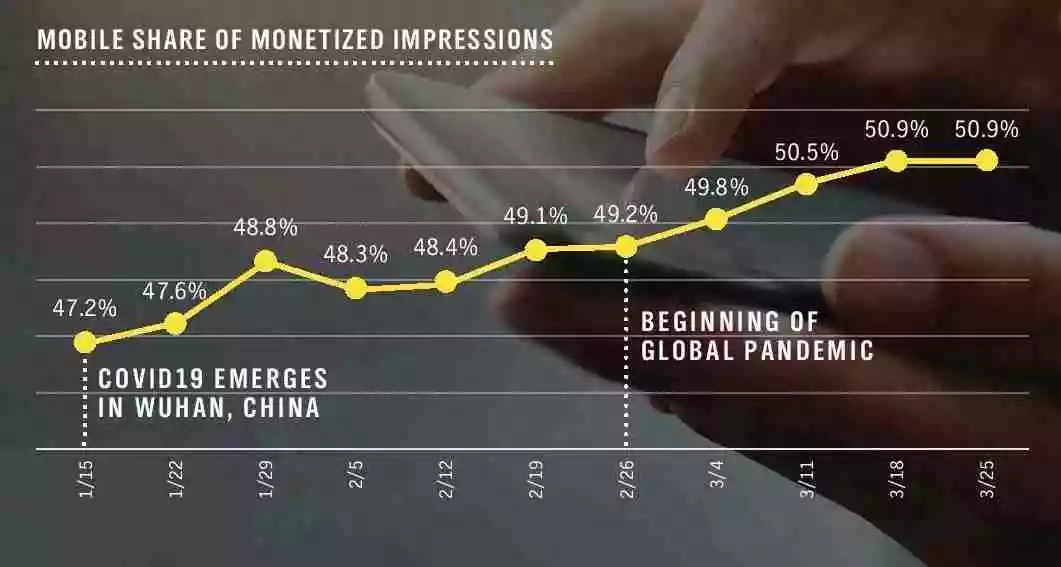
- Almost 49% of video ad spending came from mobile in Q1, 2020 and the share of mobile video ad spending varied from region to region. Such as, in the United States, mobile accounted for 44% of total video ad spending, while in the EMEA, the share of mobile video ad spending was 67%.

- Header bidding performed better on mobile devices than desktop. Although there was a decline in header bidding ad spending, mobile had seen a decline of 16% whereas desktop had ~20%.
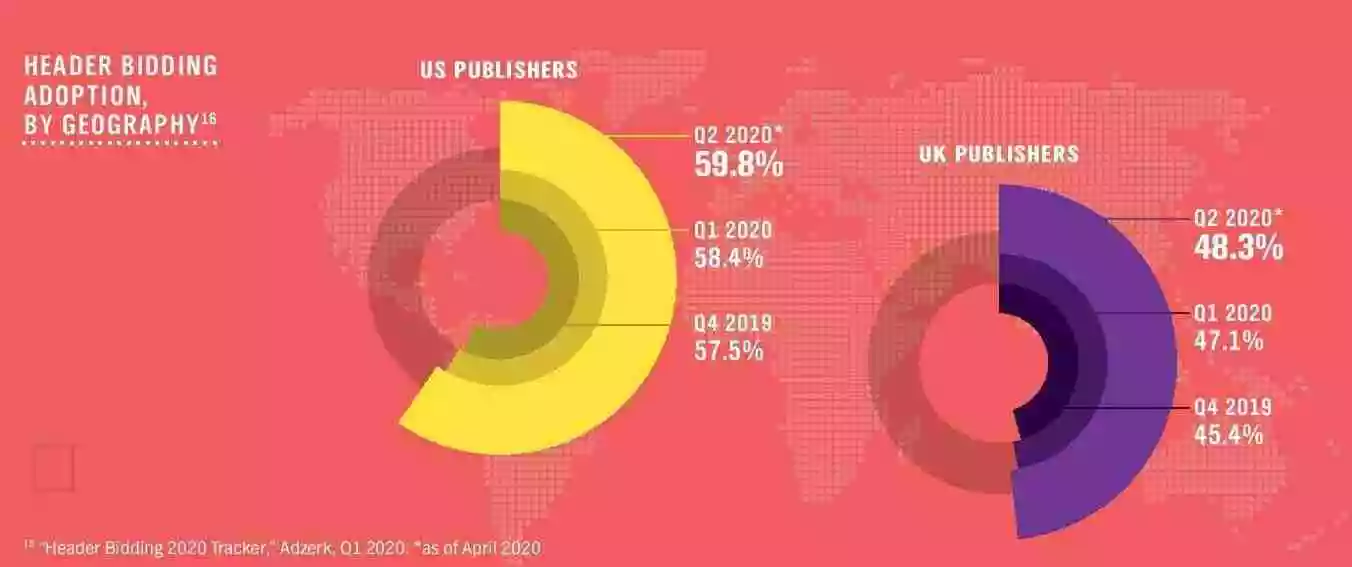
- PMP deals have grown in the last couple of months. While the mobile web has seen an increase in PMP deals by 28%, desktop PMP deals have declined by 20%.

Now that you know how important is mobile for gaining traffic and increasing ad revenue, let’s start with tactics and strategies without further ado.
How to Monetize Mobile Web Traffic Effectively?
#1: Make Your Mobile Website Fast.
Mobile devices are slow due to cellular networks, CPU, memory, and a few other technical reasons. For the given reason, mobile web pages take more time to load than web pages on the desktop.
But why are we talking about loading speed instead of actual monetization steps? Because:
“Publishers whose mobile sites load in 5 seconds earn up to 2x more mobile ad revenue than those whose sites load in 19 seconds. Also, faster mobile pages offered 25% higher ad viewability and 70% longer average sessions for sites that load in 5 seconds vs 19 seconds.”
– Google (Src).
So, the first step to effectively monetize mobile traffic is to have an optimized website. This can be done by two methods – Progressive Web Apps (PWAs) and Accelerated Mobile Pages (AMPs). The aim to introduce these technologies was to improve the mobile experience and deliver faster pages on smartphones.
PWAs are lightweight pages that load the page instantly to reduce the loading time for web content as well as ads. Unlike mobile apps, PWAs don’t have to be downloaded on the device and look like a normal website.
One of the UK-based Sports publishers, GiveMeSport has seen positive results after trying PWAs (and reducing the number of cluttered ads) on the website.
“Since we launched the lightweight version and removed the [cluttered] ads, we’ve seen users get far more engaged and spend more time viewing the content and the ads. It was a bold decision [removing ads,] but it has paid off.”
– Dean Drury, Product Director, GiveMeSports
Wired, a tech publisher, believes that launching a PWA enabled the team to generate more page views and more impressions per session.
“PWAs cache content, which speeds up the loading of ads and content. But users shouldn’t notice any difference to the site’s overall design, and salespeople shouldn’t see any change to the inventory they sell.”
– Robbie Sauerberg, GM of Advertising, Wired Media Group (Src)
According to Google, every minute you don’t have a PWA is a minute spent with 20% less revenue on your busiest customer touchpoint.
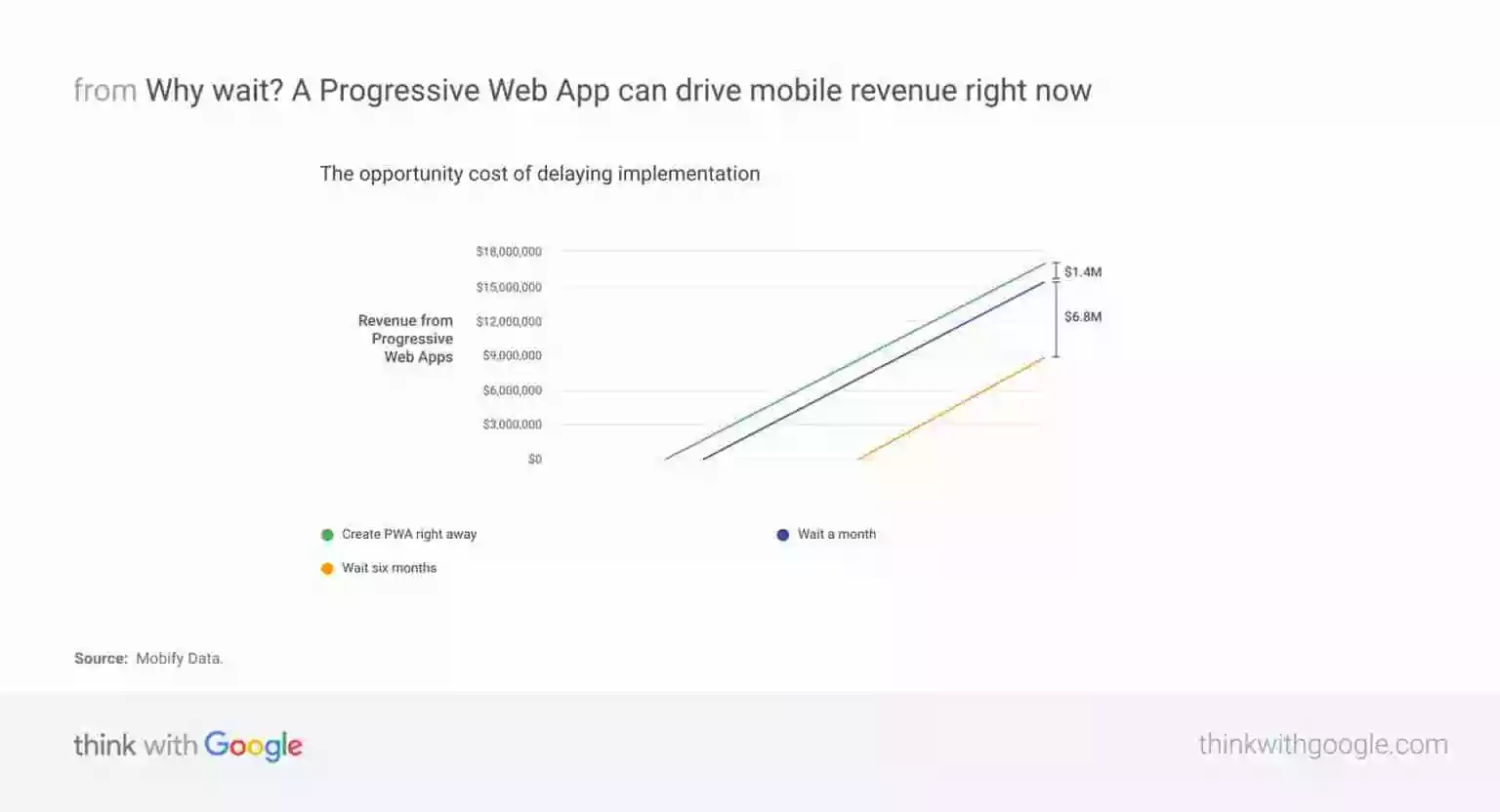
However, creating a new PWA is easier said than done because it requires a lot of technical expertise as well as a team of web developers. Besides, PWAs have a few other disadvantages such as high cost, restrictions on monetizing on Apple’s Safari browser. So, think wisely and start with a PWA if you have enough resources.
If you cannot create PWA for your mobile website, an alternative is Google’s Accelerated Mobile Pages (AMP). The framework reduces the code bloat, optimizes the mobile web page, and loads the sites faster than the usual website.
When AMP was introduced, it couldn’t support header bidding and all ad types. But today, almost all major Supply-side platforms support AMP monetization and can give you a hand to monetize AMP pages via header bidding. Additionally, AMP also supports a variety of ad formats such as video, native, carousels, etc.

Image Source – https://blog.amp.dev/
India Today, one of the leading news magazines based in India has generated 23% more revenue per AMP page than its non-AMP page despite having a lower ad density.
“AMP provides an open standard for publishers to quickly load pages on mobile. This improves the user experience by giving them a lighter version of the content.”
– Sanjay Nagpal, Head of Technology, India Today (Src)
Mobile website optimization is the first step to start with an effective monetization strategy. The next step is to know about the important ad optimization strategies for mobile devices. Because when you serve an ad to a mobile user, everything changes.
To put it simply, ad creatives, data collection, viewability, measurement, etc. become different for a mobile user. So, let’s take a look at various distinct strategies to optimize programmatic ads and increase mobile ad revenue.
#2: Optimize Mobile Ad Density.
Optimizing Mobile Ad density is one of the best ways to monetize mobile traffic. It is a pretty old terminology in the advertising industry, but publishers rarely talk about it. But it is high time to step back and measure the ad density on your mobile web pages. Because, if your ad density is higher than 30%, then you might be annoying your users. As said by the Coalition for Better Ads,
“When mobile ads take up more than 30% of the vertical height of the main content portion of the page, the result is a disruptive ad experience, regardless of whether these ads are text, video, or static images.”
If the ad density is more than 30%, it becomes hard for users to focus on the content which makes them abandon the page. So, make sure that the ads are not exceeding the threshold. Otherwise, you will end up with bad ads and the risk of losing ad revenue. Mathematically,
Ad Density =Heights of all ads within the main content portion of a mobile page total height of the main content portion of the page
#3: Add New Ad Formats and Sizes to Your Ad Stack.
Since the mobile user experience is not similar to that of desktop, the performance of ad formats and ad sizes may differ. According to one of our recent studies, 320×50 delivered ~53.7% to total mobile ad impressions. But when we analyzed the same ad size for desktop, it contributed hardly ~11% to the total ad impressions.
So, choose the right ad size to engage your mobile users and while selecting an ad size for your website, make sure that every mobile impression attains the highest possible value (in revenue, CPM, viewability, etc.). Besides, if you are only showing banner ads on your mobile web pages, then try using a mixture of other popular ad sizes and native ad formats on different parts of the user’s screen.
In the past few years, native advertising has seen exponential growth and provided an opportunity for publishers to capture users’ attention. Although a major portion of advertisers prefers to buy native ads on desktop, the average engagement rate (i.e. CTRs, average time spent) is higher on mobile devices than the desktop.
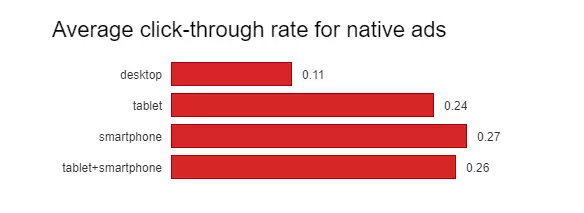
Image Source – Digiday.com
Compared to banner ads, native ads have a limited supply in the industry that makes the advertisers bid aggressively. So, if you haven’t tried native ads before, it’s time to grab the opportunity.
The most popular native ad format is in-feed ads that appear within the publisher’s in-feed editorial content, and it can include sponsored ads, videos, and more. Last but not the least, native ads’ performance changes with the type of editorial content. Refer to the below example to understand the engagement rate of native ads across different types of editorial content.
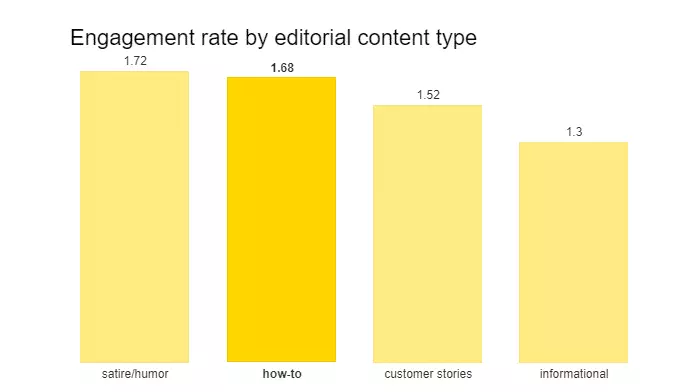
#4: Leverage Audience Data to Deliver Relevant Ads.
Finding the right audience and delivering the relevant ads is the key to avoiding wastage of ad impressions and increasing revenue. Knowing the fact of Safari and Mozilla blocking the cookies and Chrome on the same path; it has become extremely difficult for publishers to find an alternative to display targeted ads.
Furthermore, for a publisher monetizing the mobile web traffic and collecting the data for better targeting, applying the insights gained from desktop audience data will not work.
“By taking a stronger look at the source of mobile data, I think it’s going to open up some holes for people who have been taking desktop data into mobile at face value for the past few years.”
– Mike Brooks, WeatherBug (Src).
For mobile, it is the location (GPS) data that matters most to the advertisers. Because by using such data, advertisers can take advantage of both real-time locations in addition to other data. Since users can carry a mobile device while traversing, advertisers can customize their mobile creative message and can leverage geofencing, location (or place) analytics, etc. to serve the best-suited ad to the user.
For a programmatic mobile advertising set-up, you can share the location data with the Supply-side platforms (SSPs) and request them to pass it via bid request so that advertisers can identify the users and return a relevant ad.
Secondly, many publishers have started collecting the email addresses of the users via newsletter signups, event registration, online product (eBook, Whitepaper) downloads, etc. But it is understood that not all publishers can do this and gather a pile of email addresses.
For the said situation, there are advanced Database Management Platforms (DMPs) that can help you store the details of your website visitors for a given period of time and help you with serving targeted ads on the mobile web. Besides, many ad-tech partners are working on Unified ID solutions to find alternatives for cookie and tracking pixels to help the publishers without logged-in traffic.
#4: Offer Mobile Ad Inventory Transparency.
Inventory transparency is not only important on desktop but it is also critical for mobile inventories. In general, a publisher should offer transparency according to the goals of advertisers to obtain the desired results.
For an advertiser focused on brand metrics, context and content are critical. On the other hand, for an advertiser focused on performance and service-delivery related metrics, audience matters more than context and content. So, offer transparency in the ad selling accordingly.
You can share the top-level domain with your advertisers to let them be assured that the ads will be served on your website. Also, to lure the advertisers, you can share the content and context along with the top-level domain. Not only this will make them trust your brand, but it will also help in the contextual targeting of mobile users.
“The mobile programmatic advertising space is complex and has a lot of moving parts, which makes advertisers and publishers want to spend their marketing budget wherever they can find the most trustworthy sources.”
– Linda Ouyang, Head of Demand, MoPub (Src)
#5: Optimize Your Viewability.
If you think that mobile ad inventories aren’t at risk from ad fraud, then you’re wrong. With the growing number of malicious software and fraudsters, advertisers are becoming savvier about protecting their ad budget against fraud. And this leads them to prioritize the publishers whose mobile ad inventories aren’t adhering to the guidelines introduced by MRC and IAB.
“Streamlining mobile viewability is crucial to achieving scale.”
– Alanna Gombert, IAB Tech Lab (Src)
But measuring viewability on mobile devices is somehow more difficult than measuring desktop viewability. And it gets more difficult when the publishers serve video ads due to the different measurement tags (VAST, VPAID, MRAID, etc.) on mobile devices. Having said that, there has been a debate going on in the industry about defining different viewability standards across different channels.
For the time being, viewability on mobile devices should follow the MRC guidelines, and experiment with different strategies to increase ad viewability.
Conclusion
As more users are consuming the content on mobile devices than ever before, publishers have to turn to a mobile-first mindset while monetizing the website. So, try the approaches we have discussed in this article and analyze the impact of changes in your ad revenue. Also, keep yourself updated with the trending technologies (such as header bidding, PMP deals, etc.) to capitalize on the website traffic.























